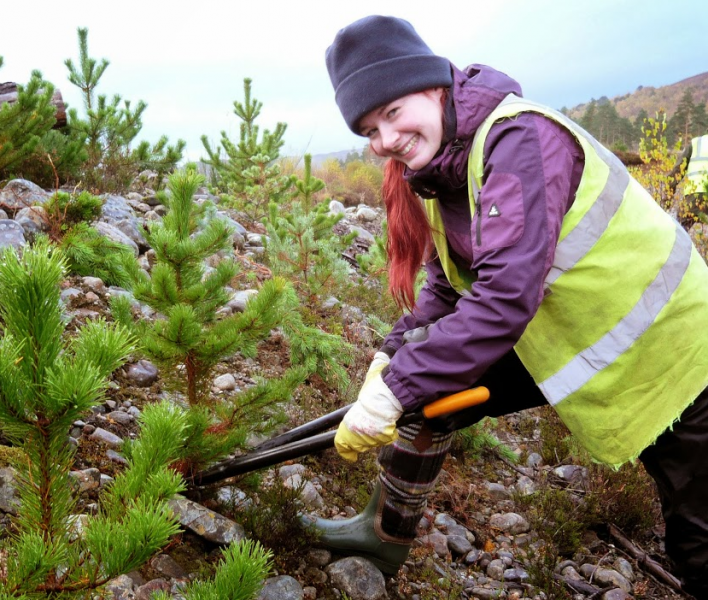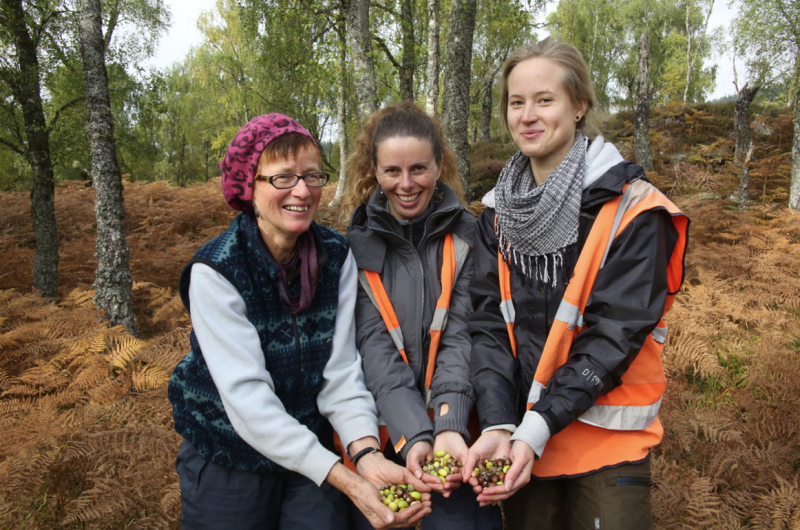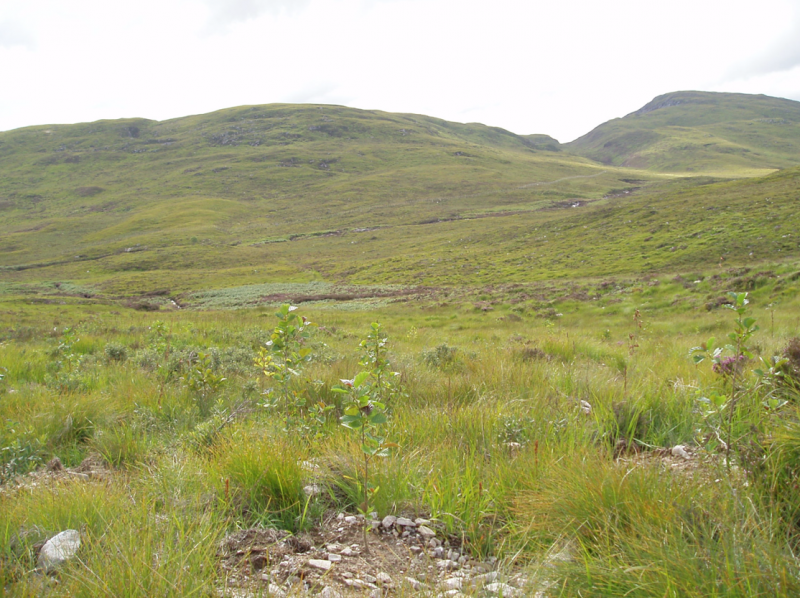Restoring the Forest
​Philip Mason has worked as an ecologist, woodsman and gardener. Last autumn he spent two months on our Conservation Estate at Dundreggan, as part of our newly expanded Long-Term volunteer programme.
Looking out from a high spot in the mountains west of Loch Ness, a river runs through conifer plantation below, and a fringe of ancient birchwood clings to the steep sides of the valley. Beyond, the empty hills roll away to the horizon. They are beautiful, yes – what a place to come to work! – but they are also naked. The once great Caledonian Forest covered most of upland Scotland: five-thousand eight-hundred square miles of species-rich boreal wilderness. Looking at a landscape of this great scale, I find it difficult to imagine that anything I can do will have much effect. Not so Trees For Life. Here on their ten-thousand acre Dundreggan Estate, and at other sites around the Highlands, my fellow volunteers and I roll up our sleeves.
There’s more to reforesting than planting trees. There’s getting rid of them, for example. Hemlock, spruce, lodgepole pine: fast growing thugs brought here from North America and Scandinavia as timber crops decades ago. They continue to grow from seed in the soil, clogging the understorey, blocking out the light. We cut them down with hand saws, or rip them up by the roots, sweating, swatting at midges with hands sticky with sap. It’s vigorous and satisfying work, and fast progress. At the end of the day another patch of pine forest is as it should be; light reaches the ground, and the native Scots pine seedlings have the room they need to grow.

Then there’s seed collecting to do. Acorns, hazelnuts, birch catkins, rowan berries. A happy and peaceful activity: something of the ancient harvest, gathering in so much potential. It becomes compulsive, enough to lean out over a sharp ravine for one more fistful of berries, or tumble headfirst down a stony bank to get at some hazel. We roll up our sleeves and chat while we crush the red rowan berries in buckets of water, to release the tiny seeds. The smell is earthy and sharp, like some wild wine fermenting.

The trees we plant are small, perhaps twelve inches tall or so, and one or two years old. Each needs genuine care. Everything seems to be against them up here: hungry deer, waterlogging, freeze-thaw, nutrient-poor peat. Mechanical diggers have prepared a spot for each, a patch of ground clear of competition from grasses and heather, better draining and much faster to plant into. A fence keeps out the deer until the trees have grown, and next year more volunteers will come and give each one a cup of rock phosphate fertiliser. All this is laborious and expensive, but gives the trees the best start.
As for us, skill comes with practice. I remember the first day I planted a hundred. I remember the only day I planted five hundred. A slow, steady advance, tree by tree, week by week, acre by acre across the hillside. Birch, rowan, alder, aspen, bird cherry and Scots pine.

The scale of this denuded landscape can be overwhelming, but a mouse eats an elephant one bite at a time so they say. It's not these trees that make the forest, but their progeny, generation by generation through time. The other plants will follow; cowberry, twayblade, glittering wood-moss. Invertebrates and birds, and surely one day the missing wild boar, perhaps even the lynx, bear and wolf. We’re not planting trees, but setting a forest in motion.

